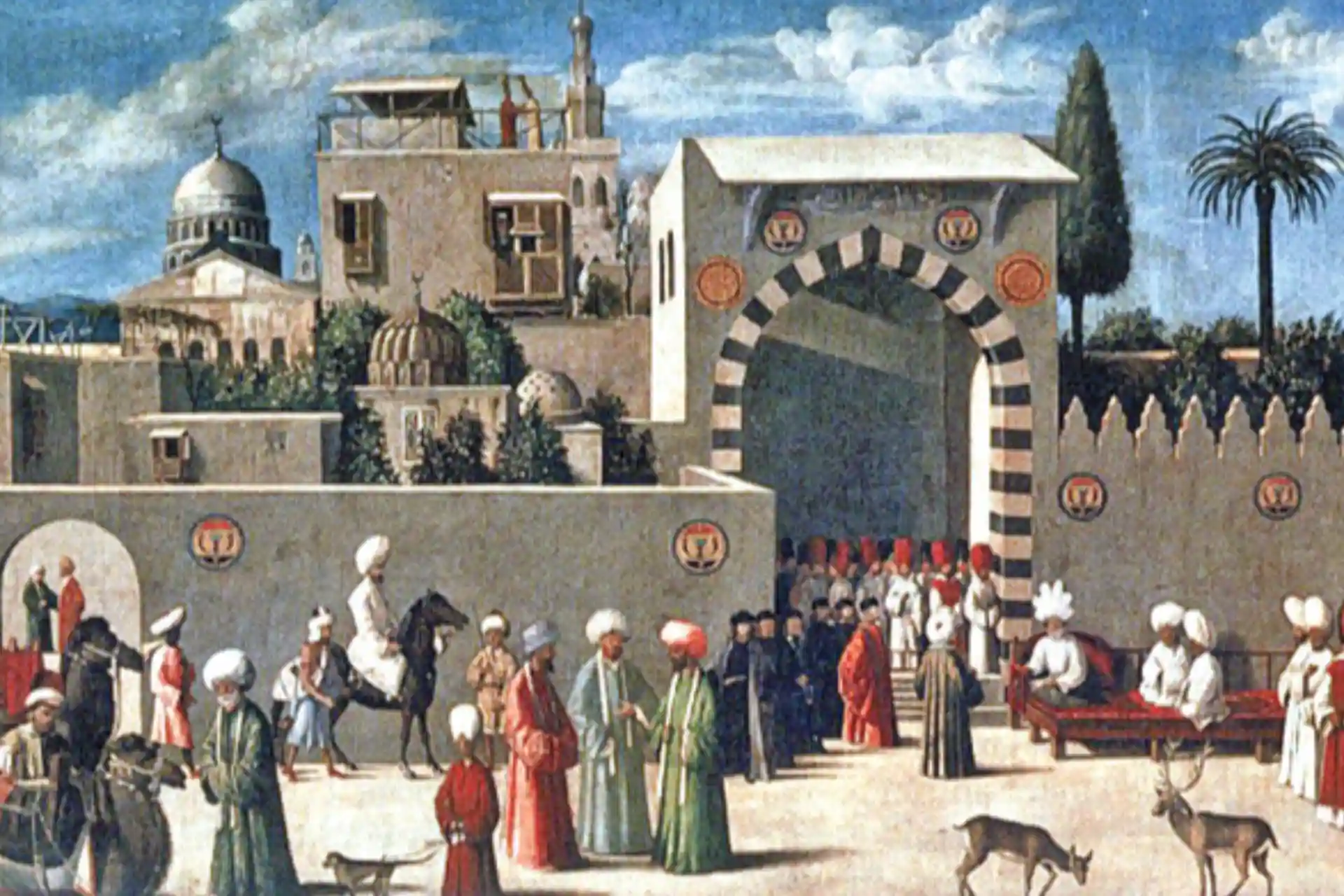05.07.2025 13:48
951
Why did Muslims lag behind in science?
Professor Akram Bugro Ekinji
The contribution of the Islamic world to science up to the 15th century is noteworthy. This can be understood from the terms "al-jabr" and "chemistry". The work of Muslims is undeniable not only in science, but also in areas such as art, commerce, and politics. So why are we lagging behind Europe in science now? What are the reasons for this?
Europeans say, "This backwardness was caused by the fanatical views of Islamic scholars. If it were not for scholars like Ash'ari and Ghazali, there would have been discoveries and inventions in the Islamic world. The West was able to use scholastic philosophy, while the East was not able to." What they mean is that Ash'ari fought against the Mu'tazilites, and Ghazali fought against the philosophers. However, scientific research continued even after Ghazali. The debates between religious scholars and philosophers were not about rational knowledge, but about understanding the truth of religion.
It is true that the gap in scientific achievement between the Islamic world and the West widened after the sixteenth century. But it is unfounded to say that this was due to opposition from Muslim scholars. It is a matter of supply and demand. When the Islamic world, which was politically and economically weakened, needed science and technology, rational knowledge continued to develop, as in previous periods. Many astronomers, physicists, engineers, and other scholars served the needs of society and the state during this period.
The second feature that the West criticizes is "the emphasis of madrasahs on theology and law." However, in the Islamic world, rational knowledge was taught separately. Astronomy and mathematics were taught in libraries full of books; in observatories where observatory equipment was constantly in use and in the presence of mathematicians and astronomers. Medicine was studied in hospitals. Therefore, during the period of political and economic crisis, law and theology lessons continued to meet the needs. Rational knowledge did not develop. Nowadays, when integration with the West became mandatory, modern schools were built where these knowledge was taught.
Ibn Khaldun attributes this to political and economic reasons and says, “Science flourishes in wealthy countries.” When a region weakens, loses its influence, and its population dwindles, it will cease to exist unless it is given financial support. The bustling, prosperous cities of the first century of Islam, such as Baghdad, Qurtuba, Kairouan, Basra, and Kufa, were centers of culture and learning. As their populations dwindled and prosperity declined, culture and learning disappeared and migrated to other regions, such as Iran and Turkestan. The heyday of knowledge coincided with the development of economic activities and technology. The path of knowledge is the same as that of commerce and industry, from Egypt and Mesopotamia to Greece, from Andalusia to Renaissance Italy, from there to Holland, and then to Industrial Revolution England. When society falls into crisis, the development of science also stops and disappears. Science requires prosperity and security.
At the end of the 15th century, the development of science became very difficult, even impossible. Until this time, neither Islam nor medieval Europe had seen serious scientific inventions. For such development, the old system had to collapse. Europe's enrichment through discoveries and population growth ensured this.
Causes of the crisis
1. Land characteristics: Much of the Islamic region was barren or unirrigated wastelands, steppes, and deserts that were uninhabitable. The Umayyads and Abbasids put great emphasis on irrigation facilities and carried out an agricultural revolution. As the central government weakened, irrigation facilities were also destroyed. After the Mongol invasion, cultivated lands also turned into deserts or swamps.
2. Nomads: When the central authority weakened, nomads always prevailed, causing chaos and anarchy. As irrigation facilities were destroyed and irrigated lands were turned into pastures or swamps, the areas under nomad control expanded. From the thirteenth century to the present, this has led to a steady decline in the population of Iraq and Syria.
3. Natural Disasters: Natural disasters in the Islamic world during the Middle Ages caused social and economic crises. In 968, the fall of the Nile River caused a severe famine. 600,000 people died. It was followed by famine and plague. The greatest disaster of the Middle Ages, the Black Death, devastated the Islamic world more than Europe. Two-thirds of the population of Egypt, Syria, and Iraq perished. Agriculture and industry collapsed. Military power also weakened in parallel.
4. Geographical position: The geographical location of the Islamic regions has made them targets for constant external aggression and attacks from the Crusades to the present day. Located halfway between the West and the East, and in addition to being located on a flat plain, the Islamic countries were defenseless in every way. Islands such as Japan and Britain have a strategic advantage in this respect.
5. Crusades: Seven Crusades were launched against the Islamic world between 1096 and 1291 in an attempt to take Jerusalem and the holy sites from the Muslims. Muslims in the captured cities were massacred. The vacated cities were populated by soldiers of the occupying armies and their accompanying rebels, merchants, and travelers. The attacks, disguised as religious ones, were motivated by economic reasons. The population of Europe was constantly growing. The population of Muslim countries, compared to 38.5 million in Europe, was no more than 12.5 million. The Crusades were the first experiments in imperialism. The population and production in Western Europe increased.
The increase in income led to a surge in investment. The Crusades provided a fertile ground for the development of the great maritime cities of Northern Italy, such as Venice, Pisa, and Genoa. In contrast, two centuries of resistance to the Crusades devastated the local economy and weakened the Arab cities.
6. Mongols: While the Muslim world was preoccupied with the Crusades, another terrible threat arose from the East. Genghis Khan united the nomadic Mongols and attacked Islamic lands. From 1220 onwards, Islamic cities were destroyed. The conquest of Baghdad brought an end to the Abbasid Caliphate. This signaled the end of a golden age in Islamic culture. The most frightening aspect of this conquest was the population decline. The number of people executed in Baghdad was about 2 million. 90% of the population was killed. Libraries with hundreds of thousands of books were not spared from this disaster.
7. Trade Routes: Due to the discoveries, trade routes such as the Silk Road lost their importance. The distribution of income between Europe and the Islamic world changed significantly. The center of international trade moved from the White Sea and India to the Baltic and Atlantic. Islamic countries became colonies, supplying raw materials. Europe carried out the industrial revolution thanks to its colonies.
8. Capitulations: The Mamluk and Ottoman sultans thought they could benefit the economy by granting privileges to foreigners. With political power weakened, capitulations backfired. They paved the way for foreign economic power. Cheaper European goods took over the markets.
9. Military conflicts: The reform projects of Muslim rulers were thwarted by internal dissensions and increasing external military attacks supported by European powers.
10. Excessive expansion: Muslims, pursuing high ideals, spread out. But they did not have the population and material strength to sustain it. In the middle of the 19th century, when population strength was equal, the population of the Ottoman Empire was 17 million, while the population of the West was 190 million. The population of Russia and Eastern Europe was 274 million. England had 30, France 37, Spain-Portugal 20, Italy 24, Germany 32, Austria 32 million.


